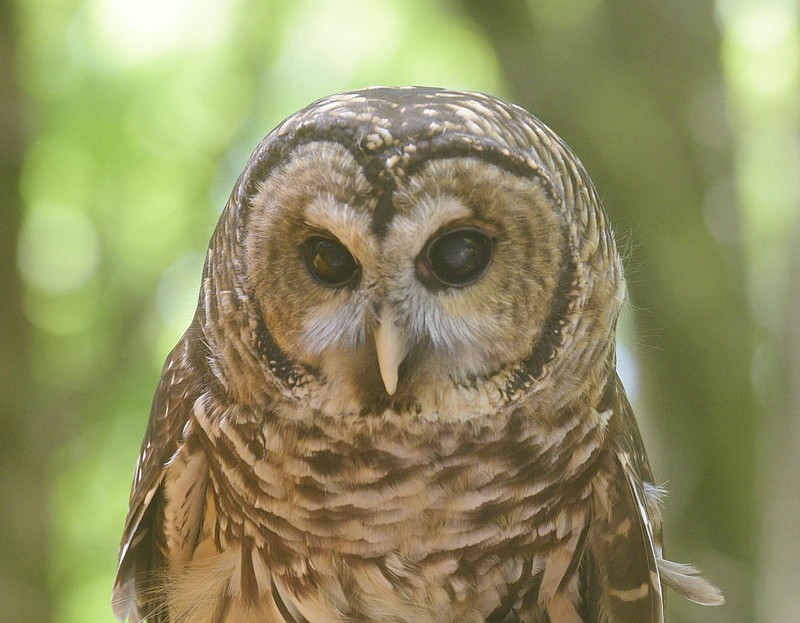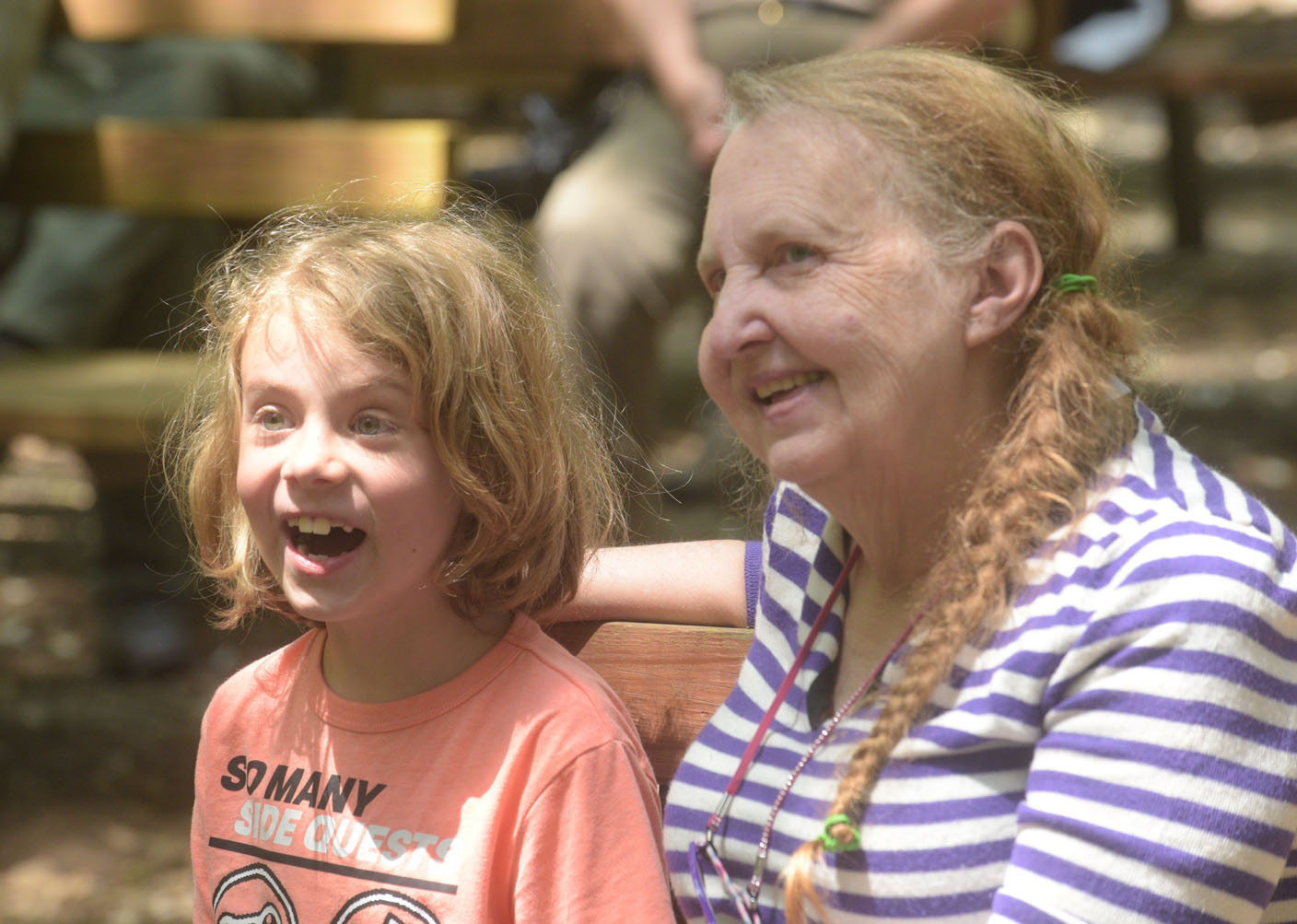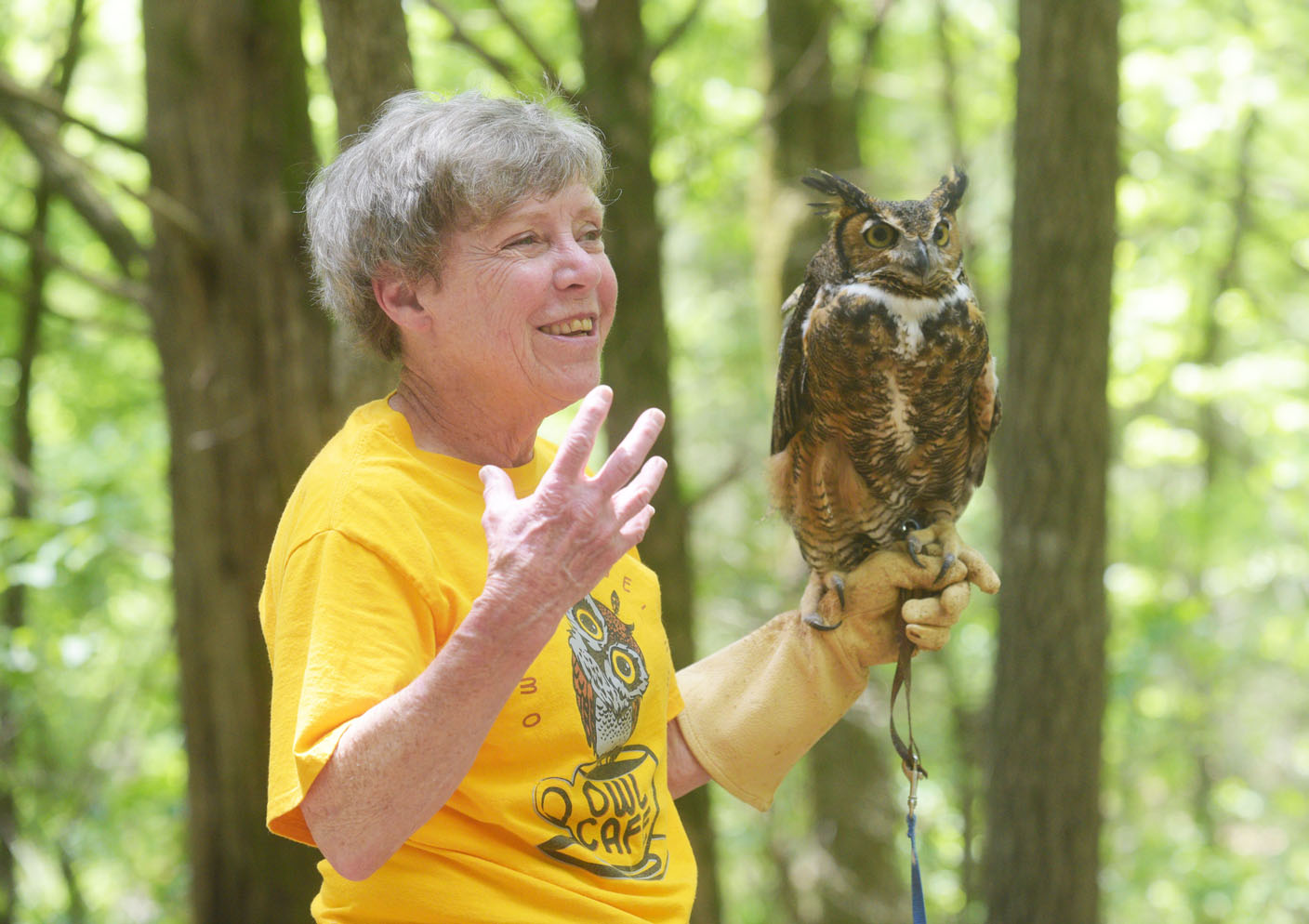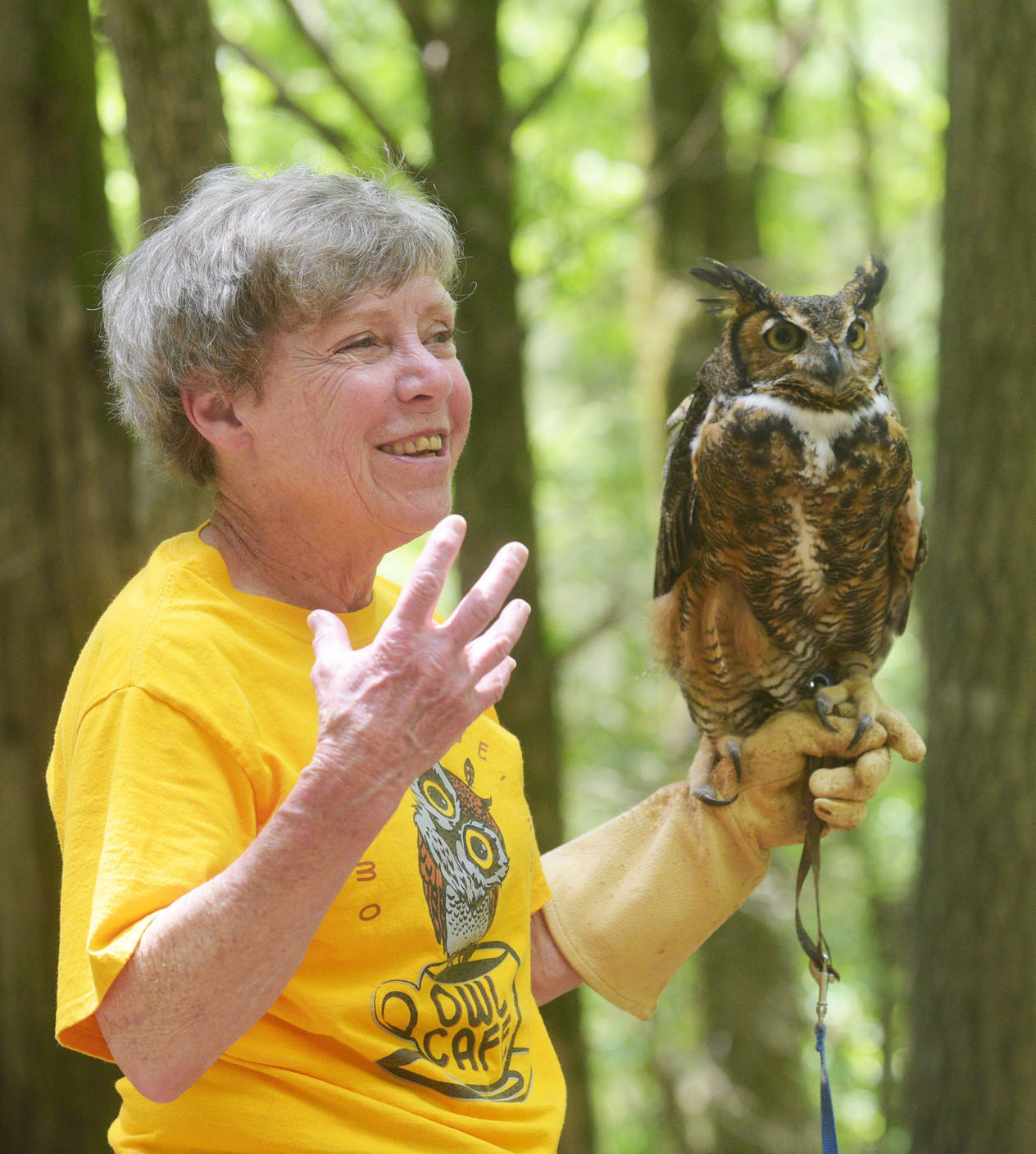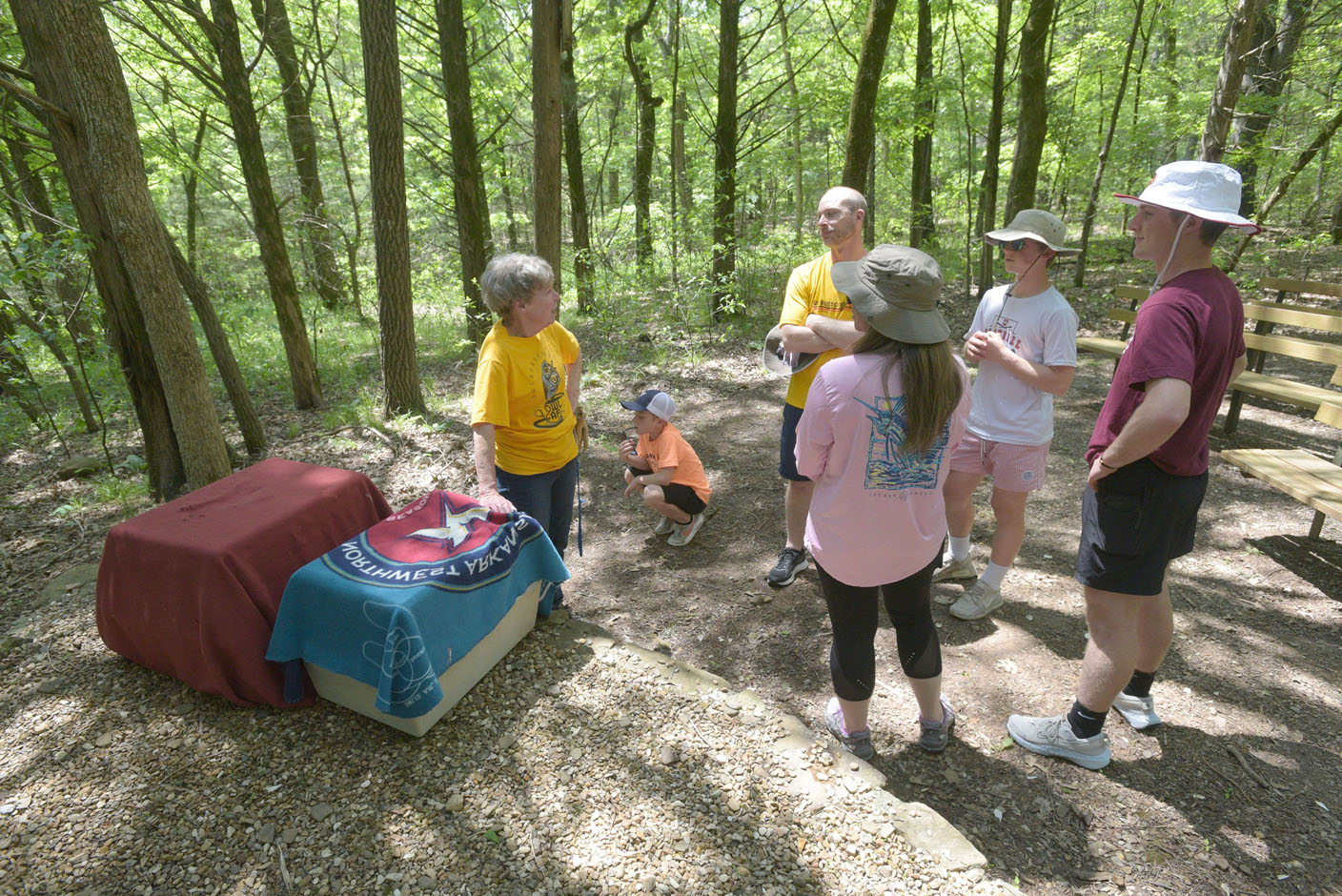Igor the turkey vulture spread dark wings like Dracula's cape as if to greet his audience with a "good evening" in a deep vampire voice.
Yet Igor seemed to enjoy the daylight -- and the limelight -- as a star of his caregiver's live bird program in mid-afternoon on May 6 at Devil's Den State Park. Lynn Sciumbato, federally licensed wildlife rehabilitator, brought Igor to her show, along with a barred owl and great horned owl. The presentation was part of the park's annual Birders Weekend that features birding hikes, visitor center programs and Sciumbato's presentation at the outdoor amphitheater.
Each bird was used to hearing an audience ooh and aah while perched on Sciumbato's hand. She wears a thick leather talon-proof glove that goes up to her elbow.
For decades Sciumbato has nursed injured birds back to health as operator and healer at Morning Star Wildlife Rehabilitation Center near Gravette. Tiny songbirds, injured owls, hawks and an occasional bald eagle get a new lease on life under her care.
"The whole point is to get them back in the wild," she told her audience at Devil's Den.
Some birds, such as Igor and the two owls, have injuries that prevent them from being released. These are Sciumbato's "education birds" that wow crowds at her frequent programs.
She's had Igor for 25 years, and the vulture almost seems like a natural ham. As if on cue, it spreads wide black-ish wings in a foreboding way and stares at the audience with dark eyes set in a featherless red head.
"Vultures don't have feathers on their head because they spend a lot of time with their faces in the cavities of dead stuff," Sciumbato explained.
Igor is the largest bird of prey in Sciumbato's show. But Sydney, a barred owl, is equally at ease in front of a crowd.
Barred owls are birds of the forest, Sciumbato noted. Devil's Den, Hobbs, Withrow Springs and other wooded Arkansas state parks are ideal barred owl habitat.
They're the owls that sound out the low "who cooks for you, who cooks for you all," in the nighttime woods, Sciumbato said. Their hearing is so keen they can hear a mouse skittering a half mile away.
"Barred owls are actually little bitty owls with lots of feathers," she said with Sydney on her hand. "There's very little owl, mostly feathers." They eat mice, lizards and small snakes, but their favorite food is frogs, she said.
A great horned owl, looking regal and wise, had its 15 minutes of fame as Sciumbato revealed amazing owl facts.
Unlike barred owls, great horned owls are a mass of muscle covered by thin feathers, she said.
"Great horned owls are the only animal that will kill and eat a skunk," she noted.
The two owls are raptors, along with hawks, ospreys and eagles, meaning they kill prey feet first with their lethal sharp talons. Their grip is 15 times stronger than a man's grip. "Once its prey is caught, it stays caught," Sciumbato testified.
Vultures aren't raptors. They eat mainly food that's already dead, tearing morsels from carrion with their beaks.
Sciumbato also solved a songbird mystery for an audience member. The guest asked why a nuthatch at her home likes to walk around on a window sill pecking on the glass.
"It sees its reflection in the glass and thinks it's an intruder," Sciumbato confirmed. "Every time it attacks, the reflection attacks back. Cardinals and robins do that a lot. They'll keep it up for two weeks at a time in the spring."
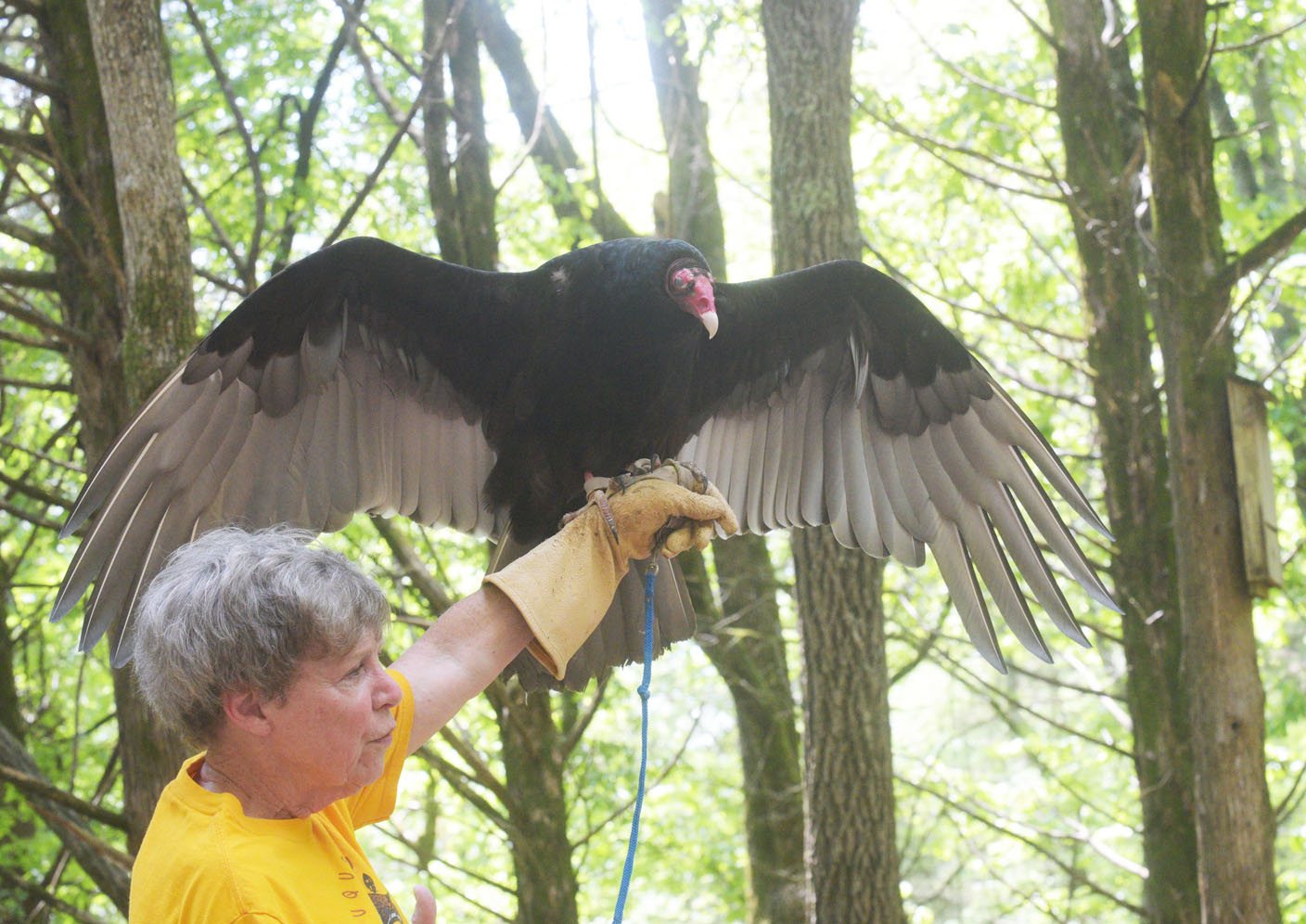 Igor the turkey vulture greets guests on May 6 during Lynn Sciumbato's program with live birds at Devil's Den State Park. Sciumbato is a federally licensed wildlife rehabilitator and operator of Morning Star Wildlife Rehabilitation Center near Gravette. Igor has been under her care for 25 years. (NWA Democrat-Gazette/Flip Putthoff)
Igor the turkey vulture greets guests on May 6 during Lynn Sciumbato's program with live birds at Devil's Den State Park. Sciumbato is a federally licensed wildlife rehabilitator and operator of Morning Star Wildlife Rehabilitation Center near Gravette. Igor has been under her care for 25 years. (NWA Democrat-Gazette/Flip Putthoff)Which vultures which?
Black vultures are close kin to turkey vultures. Black vultures appear to have white wing tips when soaring, while turkey vultures appear to have white at the back of their wings. Turkey vultures soar with their wings in a wide V-shape. Black vultures soar on a flat wingspread. Theyre also slightly smaller than turkey vultures. A close look shows that turkey vultures have red heads while black vultures have black heads.
— Source: Northwest Arkansas Democrat-Gazette
